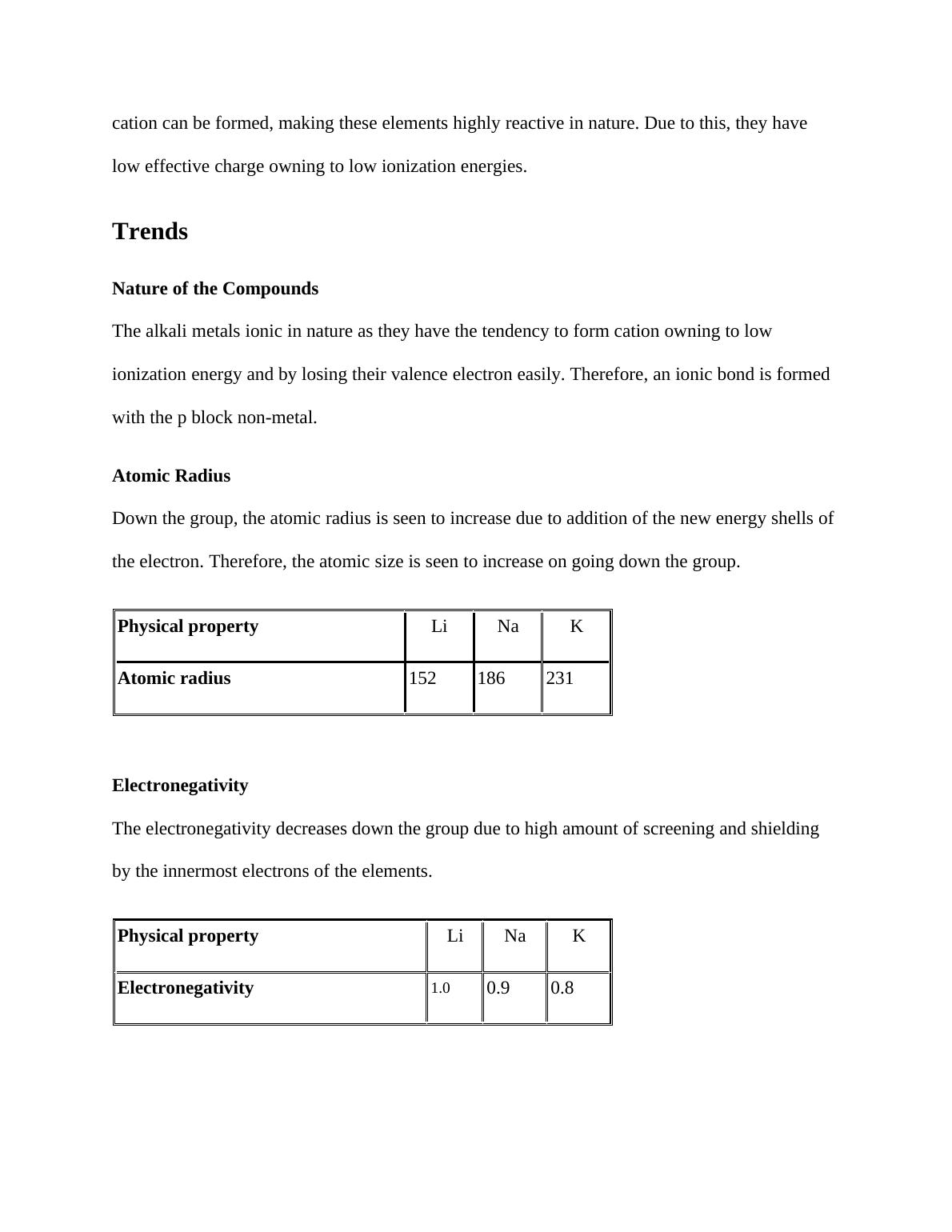Ask a question from expert
Properties and Trends of Alkali Metals: Lithium, Sodium and Potassium
6 Pages700 Words329 Views
Added on 2019-09-18
About This Document
This article explores the properties and trends of Lithium, Sodium and Potassium, including their atomic radius, electronegativity, ionization energy, melting and boiling points, density, electropositive or metallic character, and reactivity. The article also explains the nature of the compounds formed by these elements and how their properties change as you move down the group in the periodic table.
Properties and Trends of Alkali Metals: Lithium, Sodium and Potassium
Added on 2019-09-18
BookmarkShareRelated Documents
End of preview
Want to access all the pages? Upload your documents or become a member.
Core Principles of Chemistry
|11
|2290
|66
Core Principles of Chemistry.
|11
|2310
|82
Properties of Alkali Metals Assignment PDF
|8
|1133
|493


